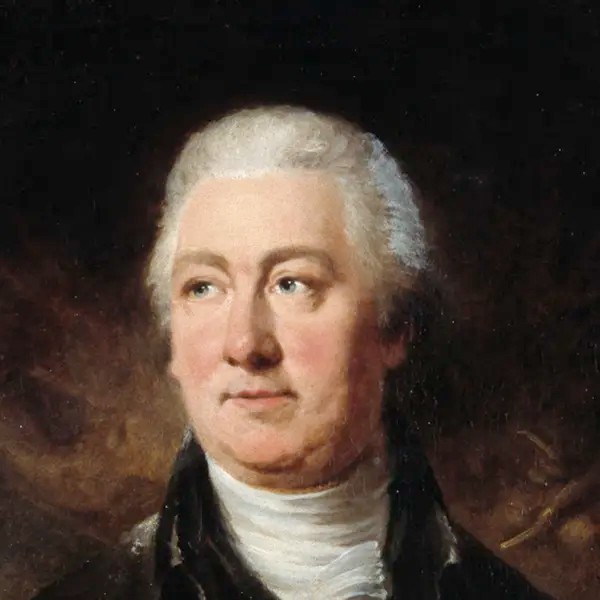
Chalmers University of Technology has its origins in the “Industrie Skole” (‘trade school’) that opened in Gothenburg on 5 November 1829 under the name “Chalmersska Slöjdskolan” (‘Chalmers Technical School’), paid for with a legacy from William Chalmers (1748-1811), a director of the Swedish East India Company.
Gothenburg has much to thank the East India Company for, particularly as it led to the city’s status as Sweden’s leading centre of international exchange. Supercargo William Chalmers made a fortune through the Swedish East India Company’s trade with countries such as China in the latter part of the 18th century.
Influenced by his fellow freemason Pehr Dubb, a naval doctor and also a director of the new Sahlgrenska Hospital in Gothenburg, he left his entire estate to the Sahlgrenska Hospital and to the establishment of a trade school for poor children who could already read and write. When it opened, the school had ten pupils and three teachers. Subjects taught included mathematics, physics, chemistry (including laboratory experimentation), chemical technology, mechanical modelmaking and technical drawing. Now, nearly 200 years later, Chalmers is a leading brand amongst Swedish higher education institutions and holds its own against international competition.
Inheritance from the founder
An international outlook and entrepreneurship, valuable qualities handed down by the founder, have been fundamental to Chalmers from the outset. Two hundred years ago, William Chalmers saw that technical skills would be key to the development of Gothenburg from commercial centre into industrial city. With “Avancez” as its motto, also inherited from its founder, and through its close partnership with industry and other community stakeholders, Chalmers has played a key role in developing Gothenburg and the Västra Götaland region into one of the most intensive research and development regions in the EU.

Chalmers’ will describes the future educational institution as “a handicraft school for the use, at no charge, of poor young people growing up in this town”. However, the focus on ‘poor young people’ was departed from at an early stage as a decision was made, on Pehr Dubb’s advice, to change the focus of the previously established school for poor children to the technical school it became. Under Chalmers’ first Rector, Carl Palmstedt, the Chalmersska Slöjdskolan was to develop into a regular school of engineering with scientific ambitions. One of Chalmers’ important overall objectives today is to recruit students from a wider background and thus reconnect with William Chalmers’ original wishes.
Following Pehr Dubb’s death in 1834, an attempt was made to change the technical school into a trade school for poor children, but this was never achieved. At this time, the school was in financial difficulty and the Government set up a new governing board. In 1838, King Carl XIV Johan ratified the initial statutes of the technical school, which stated, among other things, that teaching was to be completely free of charge.
Student numbers at Chalmersska Slöjdskolan increased rapidly at the start of the 1850s, beginning the school’s development into what we know today as Chalmers University of Technology. Over the years, Chalmers has gradually grown and moved into new premises. The first building in the Gibraltar area, home to most of the university’s activity today, was completed in 1926 – this was the physics and chemistry laboratory. Most of the major expansion in the area took place between 1943 and 1968, but there has been enlargement in recent years too and an additional campus has grown up at Lindholmen in the Hisingen area of the city.
Slöjdskolan becomes a university
As time went by, the school’s original name Chalmersska Slöjdskolan became outdated, and in 1882 it was changed to Chalmers tekniska läroanstalt (‘Chalmers Technical Educational Institution’), and then again, in 1914, to Chalmers tekniska institut (‘Chalmers Technical Institute’). When Chalmers celebrated its 100th anniversary in 1929, Prime Minister Arvid Lindman indicated that “in the near future” experts would be brought together “to consider in detail the issue of the Institute’s future status”. Four years were to pass, however, before a royal committee was finally appointed to look into the matter. On 4 June 1937, a formal decision was made by the Swedish Riksdag that, from 1 July 1937, the upper section was to be called Chalmers tekniska högskola (‘Chalmers University of Technology’), thus becoming Sweden’s second state university of technology.
Since 1940, Chalmers has also been entitled to award doctoral degrees in technical subjects – the first was awarded in 1942.
When, in 1994, Chalmers changed status from a state higher education institution to a foundation university, it reconnected with its 108 years of history as a more independent institution in the period from 1829 to 1937, coming full circle.